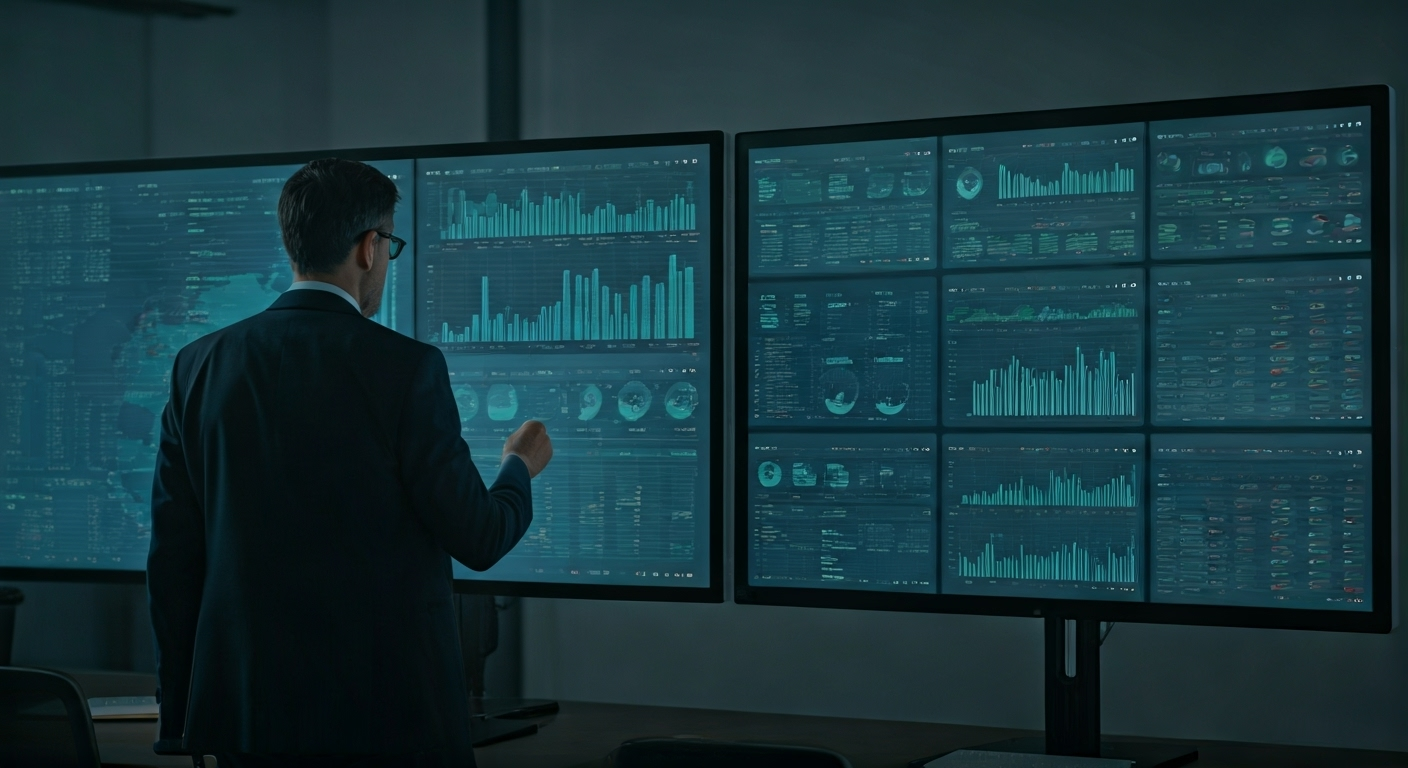An In-Depth Overview of Energy Data Management Solutions
An In-Depth Overview of Energy Data Management Solutions
Key Highlights
- Energy Data Management, or EDM, is the way a company uses data management for energy data. It works to collect energy data in a systematic way. This lets a business look at that data, use the right analytics, and find better ways to use energy. Ultimately, this can positively impact a company’s bottom line. The main goals are to make energy usage more smart and to help with cost reduction.
- EDM is important in any company for more than one reason. It helps reach goals for sustainability, helps with following regulations for regulatory compliance, and helps boost operational efficiency.
- In modern energy management, real-time analytics, data validation, and reporting are big features you will find. These features make it easy to keep track of what you use and how things work at any time.
- By using energy management tools with Computerized Maintenance Management Systems, you get better equipment performance. The mix of these tools also helps increase energy efficiency.
- EDM tools help with cutting costs. That leads to better transparency in your work and makes it easy for people to see what is used and saved. Using these tools also means your business can protect the environment and do its part for the world.
- With new advanced technologies like AI and IoT in energy management, there are new ways to make energy optimisation better. That means a company can look for even more ways to increase sustainability in its work.
Introduction
Energy Data Management (EDM) is now very important in the energy industry. It means handling energy data in a careful and organized way. This includes collecting it, managing it, and using analytics on it. As the energy world keeps changing, businesses rely on these tools to use less energy, improve operational efficiency, and follow rules. If you want better energy efficiency or to cut costs, EDM is the main tool for you, as it can have a significant impact on your operations. It helps you reach your sustainability goals and makes energy management less complicated.
Comprehensive Energy Data Management for Your Business
Understanding Energy Data Management Solutions

Energy Data Management solutions are important in the energy world today. These tools help to collect, check, and study energy data to give insights that people can use. With a clear way to work, they help a business spot patterns in energy consumption, see what will come next, and use what they have in smarter ways to save money and do things better. By using analytics, leaders in the industry now make choices with energy data in mind before problems even show up.
EDM also makes it easy to bring in and use energy management plans. With cloud-based systems that can grow as needed, these tools are strong enough for businesses that work with a lot of data. They help a business make energy planning and sustainability a part of daily work. With the help of the latest technology, EDM lets companies match their energy use to good practices. This helps a business do well even when there are new problems in the environment or the way work gets done.
Defining Energy Data Management and Its Core Principles
Energy Data Management starts with the planned and careful collection and study of energy data. When businesses use smart platforms, they get clear and exact ideas about the interpretation of energy data and energy consumption. This helps them to see patterns in how they use energy. With this process, people can make good choices to cut energy costs and make their buildings or systems work better. Good data makes analytics more correct. This lets businesses feel sure about telling what may happen in the future.
The main ideas in EDM focus on data management, transparency, and making sure the data is correct. Today’s EDM tools use steps like VEE (Validation, Estimation, Editing). VEE makes sure every set of numbers in the system is checked and trusted. Energy readings that are checked and true let people work smoother. When the data is better, teams can put together better energy budgets. This also means every investment is built on good knowledge.
Also, being able to get to the data is very important. Cloud systems mean energy data is always up so it can be used for analytics at any time of day. By pairing this with easy-to-read dashboards, EDM brings together everyday work, operational efficiency, and goals for sustainability and following all rules.
Key Differences Between Energy Management and Energy Data Management
Energy management and energy data management (EDM) are tied closely together, but they are not the same thing. Energy management is all about finding ways to use less energy. People or groups may set rules to use things like clean energy or improve old machines. They do this to help the environment and save money.
Energy data management is different. This one focuses on the systematic collection and study of energy data. It uses tools, like cloud-based systems, to save data and do analytics. EDM makes reports that help people see the energy usage and equipment performance in real time. Because of this, people can make quick choices to cut costs and use energy in a better way.
To sum up, energy management is about taking action to boost sustainability. EDM is there to give the needed data and analytics to help make better decisions. The two work together in a way that helps a company get stronger energy efficiency, better data management, and the best performance from their equipment.
Importance of Energy Data Management in Modern Industries

With more focus on being efficient at work in many industries, Energy Data Management (EDM) is now very important. It gives people and companies the data they need to use less energy and cut their running costs. With new analytics, it is easier to plan how to use energy. This makes it simple for companies to keep up with changing energy needs.
EDM also helps people and businesses do a better job with energy usage and lower their carbon footprint. It makes the way we use energy more clear. As the world adds more rules to protect the environment, EDM helps companies follow these rules. It also helps them build a good name for doing the right thing with their energy use, no matter what industry they are in. This all makes data management and energy data a big part of being both efficient and responsible.
Enhancing Operational Efficiency and Cost Savings
Operational efficiency grows stronger when companies use Energy Data Management (EDM) for real-time insights. Sensors and other monitoring tools collect energy usage data. With this, businesses can keep a close eye on how things are going. These numbers help find where things are not working well. This lets businesses set up smoother workflows, which leads to real cost reduction and helps with energy optimisation.
Saving money is also an important result. EDM helps companies use resources better by using data to find and stop extra energy spending. When companies see clearly where their energy goes, they can control their energy budgets much better and often notice real savings.
When you look at the whole picture, using energy well helps the company be in a better place financially. Lower costs for how the business runs open up more chances to use money for new ideas and other good things. This makes EDM, along with good data management and better transparency, a big part of what helps a company win in today’s world.
Supporting Regulatory Compliance and Sustainability Goals
Understanding today’s rules and meeting sustainability goals is easier with data management tools like Energy Data Management (EDM). EDM helps businesses by giving clear reports on energy usage and energy consumption. This makes it simple for companies to meet new compliance needs and rules.
EDM is not only about following the law. Its tools help track progress towards meeting the company’s own sustainability goals. Using less energy means using less power and having lower emissions. This is one way to show that a company cares about the planet. With transparency from EDM solutions, there is much less risk of getting fines for not following the rules.
Building EDM’s sustainability into your daily business can help your reputation. Both rule makers and customers who care about the environment like when they see open data about energy usage. People often believe that companies with high transparency have more brand integrity. In this way, EDM connects what a company wants to do for the planet with what it needs for day-to-day business success.
Essential Components of Effective Energy Data Management Solutions
Effective Energy Data Management (EDM) brings together best practices for data collection, reporting, and analytics in a smooth and simple way. It helps organizations get useful insights. With these insights, they can boost energy efficiency and cut down costs. A scalable system also lets EDM keep up with changes in energy data and needs.
Important features like automatic checks and strong reporting help give clear and open data. EDM uses the right mix of technology and best practices. It gives industry leaders the right tools to watch, study, and improve energy use. This teamwork builds a base for both sustainability and careful, smart energy usage.
Data Collection, Validation, and Integration
EDM starts with strong data collection. Sensors and meters always track energy consumption. They send real-time data to cloud storage systems. This kind of data is very important. It helps businesses that want to boost their operational efficiency.
A big part of EDM is data validation. It uses validation steps like VEE (Validation, Estimation, Editing). These steps help make sure that meter readings, price data, and time series information are very accurate. Good data is needed for strong reporting and analytics. Also, integration connects EDM with other systems. This makes workflows smooth and saves time.
| Component | Functionality |
|---|---|
| Data Collection | Always checking through new sensors and IoT devices |
| Validation | Set rules cut errors and keep data real |
| Integration | Join data systems and energy workflows for better work |
Analytics, Reporting, and Visualization Features
Energy Data Management works best when strong analytics tools are in place. These advanced systems look at huge amounts of data. They find trends and spot anything unusual. This helps businesses know what is going on and make plans to help save energy and use it better.
Reporting features make sure there is more transparency. Simple dashboards and clear reports show you where, when, and how much energy is being used. They help you see any waste or find out what is costing the most. There are now some EDM systems that use AI tools to guess future energy trends. The data in these systems stays right as time goes on.
Great ways to visualize information help break down all the tough analytics. Easy-to-read graphs and dashboards mean it’s simple to see patterns in your energy consumption. This lets people in a business think and act in smart ways. When you bring together analytics, reporting, and the right visual tools, EDM becomes something every business needs for more clarity, efficiency, and better data management.
Conclusion
In short, good energy data management helps companies work better and be more green. With smart use of data collection, checking data, and using analytics, people can meet the rules and save a lot of money. As energy management gets more important, picking the right solutions helps organizations make smart choices. This can boost their profit and help the world. If you want to improve how you handle energy data, contact us for a free talk. We can help find data management solutions that fit what your organization needs.
Frequently Asked Questions
What are the main benefits of implementing an energy data management solution?
Energy Data Management solutions help boost energy efficiency, cut costs, and make equipment work better. They do this by collecting energy data in a careful way and using analytics. With these technologies, you get clear insights. This helps you manage energy usage better and supports smart choices for saving money over the long run. You can also make your operations work better by using the data you have.
How does energy data management support sustainability initiatives?
Energy data management can help people use energy in a better way. This can cut down on carbon footprints and move us closer to meet our sustainability targets. When there is transparency in how the energy data is used, it lets businesses line up what they do with eco-friendly goals. With this, businesses can also show how they are working to drop their emissions.
What types of organizations can benefit from energy data management solutions?
Many groups in the energy industry, as well as in logistics and manufacturing, use energy data management solutions. These tools help people organize workflows, cut down on energy costs, and follow the right laws and guidelines. This makes data management very important in the world today.
How secure is the data within energy data management systems?
Energy Data Management systems put data security first by using strong rules. Advanced ways to hide data and keep it open help to keep energy data safe. These steps make sure that people and companies can trust EDM when they use it for data management and to handle important work in a safe way. The focus on transparency also means you know what is going on with your energy data.
What should I consider when choosing an energy data management solution?
When choosing a solution, you need to check that it supports best practices. It should give you strong energy data tools, good analytics, and help with optimization. The solution also needs to fit well with your company's main goals about saving money. Make sure it offers transparency and meets all regulatory compliance rules. The right system will help you lower your energy costs for the long term.




